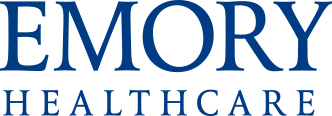Elberta Jenkins, a patient from Orange Park, Florida, had exhausted all her options for treating her failing heart valves. Her local cardiologist informed her that due to her age, she was no longer a candidate for open-chest surgery, leaving her in a desperate situation. Seeking a solution, Jenkins was referred to Vasilis Babaliaros, MD and Adam Greenbaum, MD at the Structural Heart & Valve
Center at Emory University Hospital Midtown.
Recognizing Jenkins as a potential candidate for a transcatheter aortic valve replacement (TAVR), Dr. Greenbaum hoped that this procedure would provide her with the relief she desperately needed. Unfortunately, the TAVR did not address all of Jenkins’ heart conditions. She still suffered from the deterioration of the mitral valve and hypertrophic cardiomyopathy which severely limited blood flow and blocked space for a new mitral valve.
With open-chest surgery ruled out, Dr. Greenbaum attempted an alternative method to create space for the mitral valve replacement. He explored a technique involving the delivery of alcohol via a catheter to shrink the heart muscle. However, due to the poor condition of Jenkins’ blood vessels, this procedure was unsuccessful. It seemed that all conventional options had been exhausted.
Meanwhile, Drs. Greenbaum and Babaliaros had been working on a novel approach in collaboration with Robert Lederman, MD, and his team at the National Heart, Lung and Blood Institute (NHLBI) of the National Institutes of Health (NIH). They had been testing a procedure called Septal Scoring Along the Midline Endocardium (SESAME) which involved using an electrified wire to create space
within the heart muscle without the need for open-chest surgery. “We started getting referrals for patients who had fallen through the cracks, who didn’t have a solution that was either commercially available or in the mainstream research trials,” says Babaliaros. “We’d start thinking about what we might be able to do to help them, how we could modify our tool set to meet their need. We’d take the idea we came up with to the NIH to further develop it and test it on animals, and then we’d offer it on a compassionate care basis to these patients who had no other options.” The entire process, from concept to implementation, could be as fast as several weeks, as was the case with Jenkins. “Traditionally, someone might come up with a new idea and take it to industry,” says Greenbaum. “They’d have to develop and test prototypes going through the Food and Drug Administration, and it could take 10 to 15 years before that device or technique is available. But some people don’t have that time. That fact that we can, through our unique relationship with the NIH, offer patients novel solutions sometimes within a month or two can save lives.” Dr. Greenbaum informed Jenkins about the ongoing testing of SESAME on pigs. After hearing that the pigs had fared well, Jenkins decided to give the experimental procedure a chance. In January 2021, Drs. Greenbaum and Babaliaros performed the first-in-the-world SESAME procedure on Jenkins, successfully creating space for a mitral valve replacement several months later.
Today, Jenkins feels significantly better and has resumed her active lifestyle. Her successful outcome demonstrates the potential of innovative procedures Hotwiring the Heart continued developed through a unique collaboration between Emory’s Structural Heart & Valve program and the NIH. This partnership allows for rapid concept development, testing on animals and compassionate care options for patients who have run out of alternatives.
The success of SESAME has marked a breakthrough in the treatment of hypertrophic cardiomyopathy, providing a non-pharmacologic option to patients who are not candidates for traditional surgery Since Jenkins, Drs. Greenbaum and Babaliaros have performed SESAME on more than 50 patients, on a compassionate-care basis, with promising results. They plan to initiate a clinical trial in the future. This aims to compare SESAME with other options such as surgical or alcohol ablation procedures. The Structural Heart & Valve Center at Emory Healthcare remains committed to innovative solutions for patients who have been told there are no further options. The collaboration between Emory Healthcare and the NIH has allowed these physicians to pioneer transcatheter electrosurgery and explore groundbreaking therapies that offer
hope to patients in dire need.
For Elberta Jenkins and her family, this innovative approach has given her a new lease on life. She is enjoying activities she had not been able to do for years, like hiking, and her daughter expresses joy in having her mother back to a state of well-being. With continued advancements and a vision for the future, the Emory Structural Heart & Valve hopes to make transcatheter procedures like SESAME the standard of care for hypertrophic cardiomyopathy within the next decade.
To refer a patient to the Emory Structural Heart & Valve, please call 404-251-8258.

Emory Heart & Vascular
Hotwiring the Heart: Emory’s Electrifying Breakthrough
How Emory Structural Heart & Valve Developed a New Electricity-Based Technique to Help a ‘Hopeless’ Patient
Request a Referral
* View our call center hours
Please visit our privacy policy for more information.
